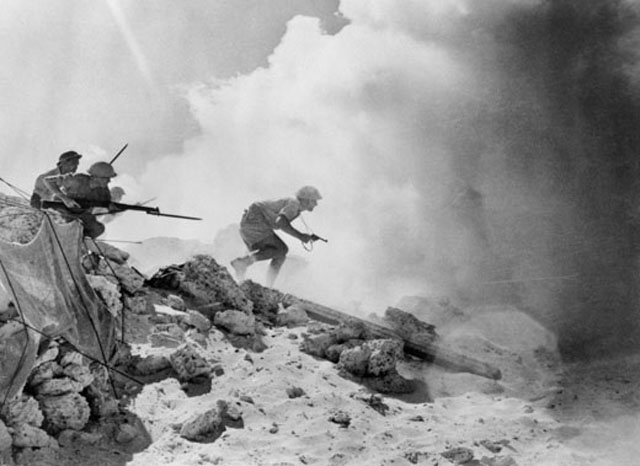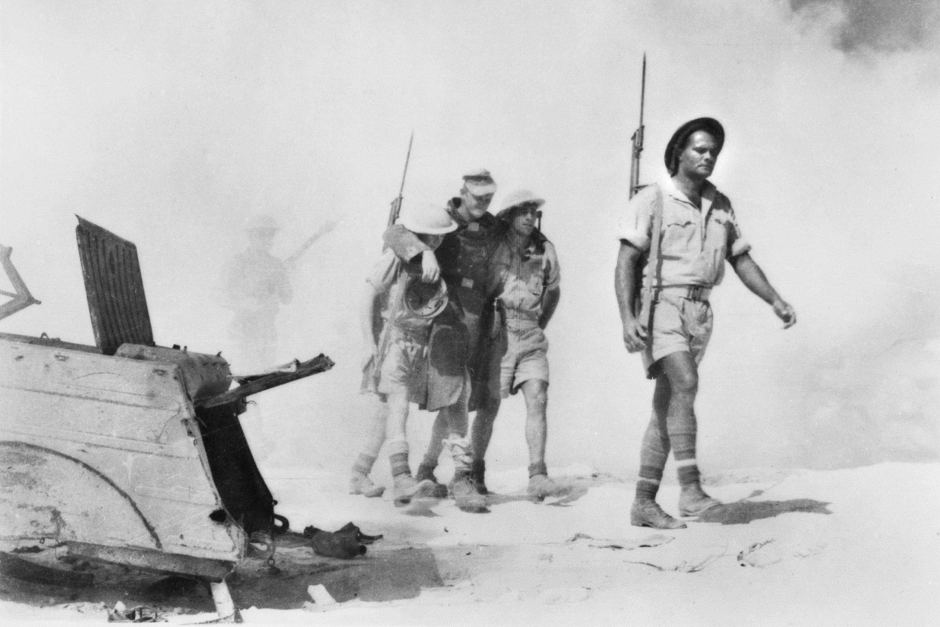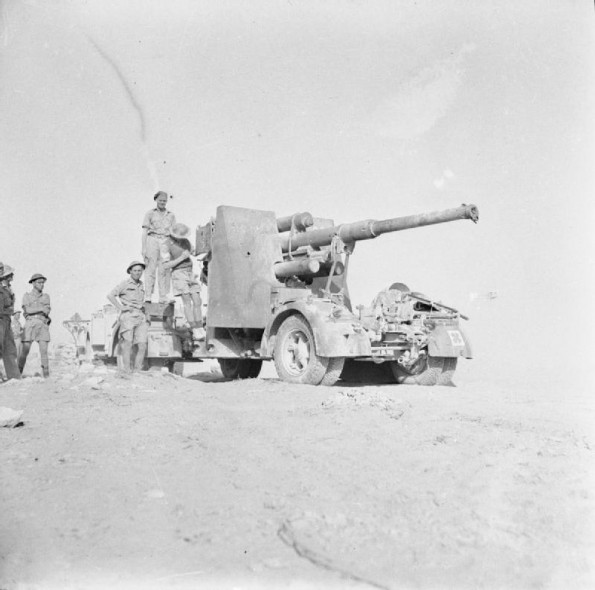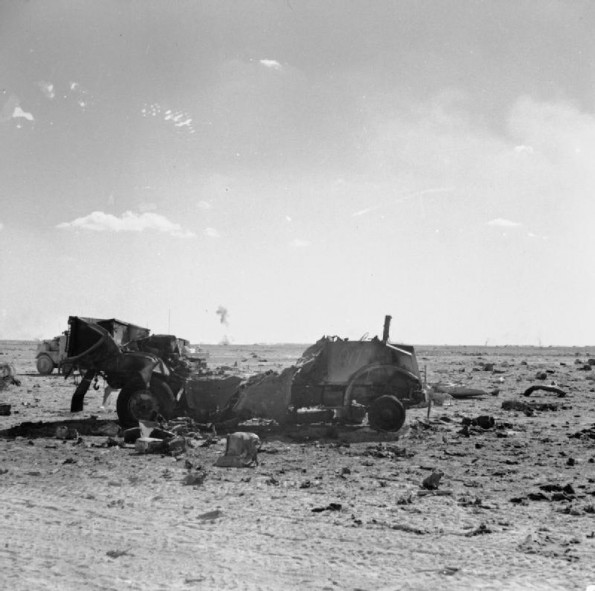Air Operations, Bismarcks
V Bomber Command B-17s attack a ship near Gasmata, New Britain.
[Air Operations, East Indies
22nd Medium Bomb Group B-26s attack Dili, Timor.
[Air Operations, Egypt
Allied aircraft supporting the British 8th Army breakout attacks mount more than 300 sorties against Axis forces fleeing along the coastal highway. In 45 bomber sorties and 88 fighter sorties, 12th Medium Bomb Group B-25s and 57th Fighter Group P-40s attack numerous tactical targets, including tanks, motor vehicles, road convoys, an Axis landing ground and supply dumps, fuel installations, and troop concentrations.
[Air Operations, Europe
BOMBER COMMAND
Daylight Ops:
- 3 Stirlings are sent to Lingen and for their first operation, 3 Venturas to a factory at Hengelo.
- 2 of the Stirlings bomb a factory in Lingen. The Venturas are unable to locate the primary target and bomb railways in Holland instead.
- There are no losses.
- 29 Wellingtons lay mines off the Biscay ports without a loss.
Allied Planning
Gen Chiang Kai-shek promises 15 Chinese divisions, to be put under the command of Gen Stilwell, for the recapture of Burma, for which the British are concentrating forces in India.
[Battle of El Alamein
The German and Italian forces begin to withdraw but some are halted because Hitler orders no retreat. They are still holding up the Allies' armored thrust. In the south the Italian infantry is already committed to the move back. Rommel is astonished by the lack of pressure from the British, who are in fact trapped in confused traffic jams in the paths through the minefields. During the night the 51st Div and a brigade of the 4th Indian Div seize the Rahman track south of Tell el Aqqaqir and break through the Axis anti-tank defenses. Rommel, however, has already given the order to withdraw. Some Italian divisions, including the Folgore Parachute Div, stay behind to sacrifice themselves while the main body retreats.
|
|
At 10:30a.m. Rommel receives a telegram from Hitler in which it is impressed on him that he must hold his positions: 'In the situation in which you find yourself there can be no thought other than to resist, not the yield a single stem, to throw into the battle every man and every weapon still available. . . Despite their superiority, the enemy too are at the limit of their resources. It would not be the first time in history that the stronger will triumphed over the stronger enemy battalions. You can show your troops no other road than that which leads to victory or to death.'
|
|
|
|
Battle of the Atlantic
- The US tanker Hahira (6855t), in Convoy SC-107, is torpedoed and sunk by U-521 about 400 miles south of Cape Farewell with the loss of 2 crewmen and Armed Guard sailor. 36 surviving crewmen and 17 Armed Guard sailors are picked up by the British rescue ship Southport.
- The US freighter East Indian (8159t) is torpedoed and sun by U-181 300 miles southwest of the Cape of Good Hope with the loss of 17 of her 47-man crew and 6 of the 12 passengers.
Guadalcanal
The 5th Marines completes the reduction of the Japanese pocket at Point Cruz. The 2nd Marines takes the lead with the 1st Battalion and the Whaling Group attacking west of Point Cruz. The 2nd Battalion, 2nd Marines and the 1st Battalion, 164th Infantry, under Lt-Col Frank C. Richards, having been ordered forward from positions on the Ilu River, are in reserve. The marines move across the island hacking their way through the jungle. They attack toward Kokumbona. Meanwhile the 5th Marines successfully reduce the enemy pocket at Point Cruz, killing about 350 Japanese and capturing 12 37-mm guns, 1 field piece and 34 machine-guns. After the reduction of the pocket, the 5th Marines and the Whaling Group are ordered back to the Lunga area, and Col Arthur, commanding the 2nd Marines, takes over tactical direction of the offensive from Col Edson.
In the morning the newly landed Japanese force moves west. East of the Lunga perimeter, the 2nd Battalion, 7th Marines, engages the enemy but is hit by artillery and mortar fire. A Japanese unit pushes southwest to outflank the marines, but the marines withdraw slowly along the coast, cross the Nalimbiu and take up a stronger position on the west bank. Hanneken finally gets through to division headquarters at 1445 informing them of his situation.
When information of an enemy landing reaches division headquarters in the afternoon, Vandegrift calls for naval and air support immediately. Aircraft bomb and strafe enemy positions, but with limited visibility the results are insignificant. e sends a message to Col Carlson that his men would not be brought out, but would stay at Aola Bay and be reinforced by 2 more companies. The 1st Battalion, 7th Marines, under Col Amor L Sims, the regimental commander, is dispatched by landing craft to Koli Point. The 164th Inf, less the 1st Battalion, moves from positions along the Ilu east to a point about 4,000 yards south of the 7th Marines at Koli Point to envelop Japanese left flank.
Vandegrift learns that the missing dive bombers from the previous day had crashed in a bad storm that night.
Yamamoto's lates plan involves the Navy landing the 38th Army Inf Div and the 8th Special Naval Landing Force with their heavy weapons and supplies. This will be complete by November 12th. On the night of November 12th 2 battleships will bombard Henderson Field. On the night of November 13th the last of the troops will be landed and a strong force of cruisers will bombard the airfield. Yamamoto sends the 8th Fleet to escort the transports and to protect the troops' landing. This fleet consists of 2 carriers, 4 battleships, 7 heavy cruisers, 4 light cruisers and 30 destroyers to protect 11 transports carrying 14,500 infantrymen.
[Pacific
- The US submarine Haddock (SS-231) sinks the Japanese merchant cargo ship Tekkai Maru (1925t) in the East China Sea between Shanghai and Korea.
- The US submarine Seawolf (SS-197) sinks the Japanese transport Sagami Maru (7189t) off Davao, Philippines.
- The US submarine Tambor (SS-198) sinks he Japanese merchant cargo ship Chikugo Maru (2461t) in Tonkin Gulf, northwest of Hainan Island.
United States, Politics
In congressional elections the Republicans make some gains but do not win control. They gain 9 extra seats in the Senate, 42 in the House and 4 more state governorships.
[




